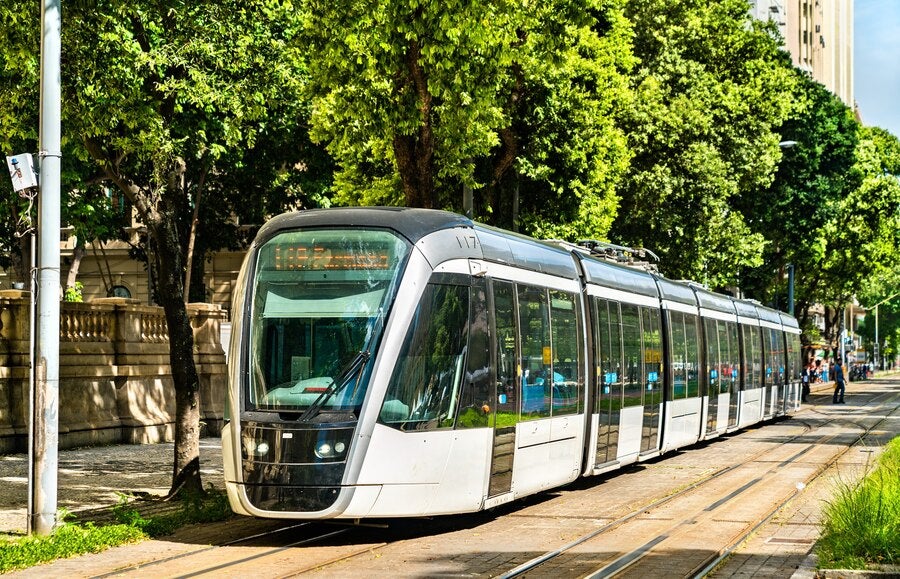Picture this. Instead of being stuck in traffic jams, you spend time with family or play football with friends. Instead of spending money on car bills and gasoline, you spend it on a healthy dinner or save it for your next holiday. And instead of getting sick from inhaling fumes and forgetting your city overlooks the Andes, you breathe fresh air and see blue skies.
This is the future Latin Americans and Caribbeans deserve. A new IDB and IDDRI report, funded by the French Climate Fund, suggests governments can deliver it and end the climate crisis in the process. But enabling the transition to carbon-free transport requires thinking hard about the barriers that prevent more livable cities to be the norm in the region and acting on regulations, infrastructure, and incentives to remove them.
Redefining public space can deliver better transport and better lives
The technical solutions that can deliver better cities are known. There are no one-size-fits-all solutions, but the general ingredients include:
- Walkable neighborhoods and accessible services that reduce the need to travel long distances for daily necessities
- A well-designed, safe, and convenient public transport network based on buses, trams, and metros that serves and connects residential areas, business quarters, and leisure spots
- Safe and easy-to-use infrastructure for walking and biking that incentivize healthy, active transport
- Electric buses and cars that keep streets clean and noise-free
Cities like Curitiba, Brazil, show that cities can be redefined within years to provide some of these improvements to their citizens.
Better transport also means stopping climate change on its track
Changing the way we move is also essential to reduce climate change impacts. Today, gasoline and diesel burnt for transport emit 15% of heat-trapping greenhouse gas emissions in Latin America and the Caribbean. To meet global climate change goals, transport emissions will need to drop significantly. But instead, transport is currently the fastest-growing source of GHG emissions in the region, on par with electricity. As GDP and population grow, more people graduate into the middle class, which is excellent. But if the antiquated car-centric lifestyle remains the norm, growth will mean more congestion, more pollution, and more emissions. By 2050, urban passenger transport demand could increase 3.5-fold in the region.
Fortunately, technology and practices are evolving very favorably. For instance, the cost of batteries has dropped dramatically in the last decades, car manufacturers have understood how to market EVs, and the adoption of electric vehicles is skyrocketing.
Despite these benefits, many barriers still prevent people from using electric vehicles, choosing biking or walking, or using more public transport. The good news is that, by providing subsidies and infrastructure and introducing regulatory changes, policymakers can create fertile conditions that favor electric mobility, public transport, and biking and walking.
Governments need to build infrastructure, reform regulations, and provide financial incentives
A key issue is that walking and biking are often dangerous. While much less distance is covered by walking and biking than driving, 3 out of 10 people killed on the road are pedestrians and cyclists. No wonder people prefer to drive even for short, 5-minute trips and do not take their kids on more leisure bike rides on the weekend.
The solutions are known. They do not involve paint. Bikers and pedestrians need lanes and sidewalks that are physically separated from traffic and parked cars (to prevent “dooring”). They need specific traffic lights. They need dedicated bridges and tunnels to cross highly frequented streets and highways. They need proper, functioning lampposts. Governments should invest in this infrastructure, which is often much cheaper than roads for cars. Regulations and capacity building are also crucial. Governments can decrease the maximum speed of vehicles in urban areas. They can train police and traffic enforcement to enforce safe distances between cars and pedestrians or cyclists and prosecute dangerous car behavior.
Another critical issue is that electric vehicles are still too expensive. To be sure, they are already cheaper to own than fossil-fueled alternatives when you compute costs over their lifetime, thanks to much lower maintenance needs and dramatically better energy efficiency. But their upfront cost can be twice the price of a gasoline or diesel vehicle. This slows down the adoption of zero-emission cars by cash-constrained families and businesses.
Here too, the solutions are known. For the specific case of electric buses, how the government designs public transport markets is critical. For cars, governments can provide zero interest rate loans or trade-in programs, where buyers of electric vehicles can receive a subsidy in return for their old fossil-fueled car, usually between 10%-30%. Toll exemptions and tax benefits on car insurance could also be used – but only at the beginning of the transition, to kick start market adoption. As progress on batteries continues, electric vehicles will likely become cheaper to buy than gasoline or diesel alternatives. In the long term, road tolls, city tolls, and pricing for parking in public spaces applied to both electric and gasoline vehicles can incentivize walking, biking, and using public transport.
All hands on deck to achieve carbon-free prosperity
Although each city is different, the examples above show a clear path for the region:
- Visualize cheaper transport for better lives,
- Identify the obstacles on the road
- Get governments to enable the transition.
With all stakeholders working towards this goal, Latin America and the Caribbean can transition to a transport system that is clean, reliable, smart, accessible, and affordable.
Many other barriers prevent the uptake of better transport systems, and similar things can be said about better energy, buildings, agriculture, industry, and waste management. Learn more by reading IDB and IDDRI’s report on 15 transformations toward net-zero prosperity.


Leave a Reply